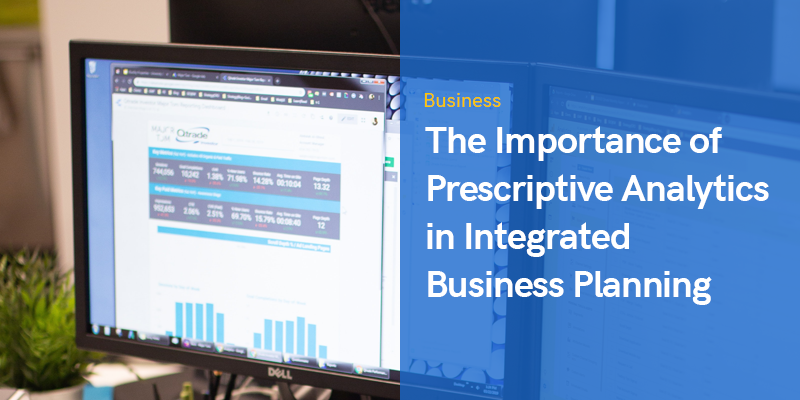
The Importance of Prescriptive Analytics in Integrated Business Planning
Integrated business (IBP) planning depends on analytics to function.
More specifically, it depends on prescriptive analytics.
Prescriptive analytics is considered to be the third and final phase of analytics, after descriptive analytics and predictive analytics.
It is more complex, and businesses (especially small businesses) often bring in consultants who specialize in prescriptive analytics because they do not have any qualified analysts on their teams.
Even if your business is planning to bring in an outside analytics agency, you should still familiarize yourself with prescriptive analytics to make working with your analysts more efficient.
What is Prescriptive Analytics?
There are three phases of analytics: descriptive, predictive, and prescriptive.
Descriptive analytics seeks to describe what is happening.
Predictive analytics focuses on forecasting what will happen.
Prescriptive analytics seeks to not only describe your business’s operations and to forecast what will happen, but also to figure out why your business will see these results.
Also, prescriptive analytics can be used to help an organization choose a strategy for its future operations.
The most advanced forms of prescriptive analytics seek to not only assist an organization in choosing a strategy for future operations, but also to predict the possible results of several different proposed strategies.
It can take years of prescriptive analytics for a business to get to the point where it can accurately predict the results of several different potential strategies.
This is because an organization needs time to adjust its prescriptive analytics model in response to results.
How Prescriptive Analytics Can Be Successfully Utilized
To understand how your business can successfully utilize prescriptive analytics, it is helpful to look at how other organizations have successfully implemented prescriptive analytics.
One industry where businesses successfully use prescriptive analytics on a large scale is oil and natural gas exploration.
Oil and natural gas exploration firms must sift through an enormous amount of data, much of it of little importance.
To do this, they use prescriptive analytics to create models that sort data effectively.
These models will highlight areas that are likely to have significant deposits of oil and natural gas.
Prescriptive analytics can also help a business manage oil wells after the petroleum deposit has been discovered.
A successful prescriptive analytics model will allow a petroleum extraction firm to predict when a well may run dry.
What Your Business Can Learn From Petroleum Exploration Companies
One of the most important things that your organization can learn from these companies is the value of using prescriptive analytics to guide future strategies.
Petroleum exploration companies stake their entire business on prescriptive analytics.
While your business’s usage of prescriptive analytics does not have to be as extreme, you should still be willing to bet on your prescriptive analytics model once it has been proven accurate.
How Prescriptive Analytics Can Scale as Your Business Grows
Prescriptive analytics should be able to scale along with your business.
To ensure that your prescriptive analytics processes scale properly, you should focus on three factors: the volume, variety, and velocity of data.
You should prepare your prescriptive analytics processes to scale when you first implement them.
Recommended Posts

7 Ways to Make Money Online for Beginners
April 29, 2024

Top 6 Free Windows Screen Recorders for Your Personal Blog
February 8, 2024
